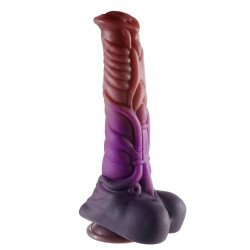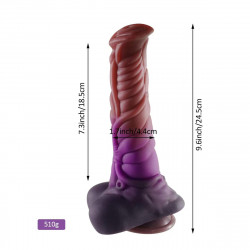
Submissive
A sexual participant who voluntarily cedes some or all of their control to a dominating partner is referred to as a submissive or "sub." In the BDSM community, this kind of collaboration is frequently referred to as a dominant/submissive (D/s) connection. Subs can identify as any sexual orientation or gender. For various people, being submissive might imply different things. It may involve a wide range of activities. Submissives who offer themselves to their dominant enjoy the acts the dominant performs on them and the satisfaction from knowing they are appeasing the dominant.
Psychological language signals, such as calling the dominating person "Sir," "Master," "Ma'am," or "Mistress," can be used by some people to demonstrate submissiveness. It could entail further types of humiliation. Additionally, it may encompass a variety of physical activities, such as impact play (spanking, caning, and paddling), various forms of torture, and bondage (rope, collaring, cuffs, and caging).
When it comes to pain, submissive behaviors might also differ. While some subs thrive on severe forms of pain, others like subtle teasing. Obedience, pleading and requesting permission, receiving punishment, roleplaying, and being shared and displayed by the dominant are further subordinate behaviors. Gags, handcuffs, spreader bars, paddles, blindfolds, and other sex toys and equipment can also play a significant role in submissive behavior.
Some dominants and submissives can switch roles depending on the scene.
More About Submissive
People outside of the BDSM world frequently mistakenly believe that submitting means weakness when they observe someone being subservient. Nothing is farther from the truth in actuality. A submissive person has accepted and understood those facets of their personality. This self-awareness places them on an equal footing with the dominant and heightens enjoyment. If the submissive doesn't take their role as voluntarily as the dominant does, there can be no domination in a D/s relationship. Both the dominant and the submissive are equally reliant.
Another accusation made about submissives is that they tolerate mistreatment. There could be D/s partnerships that are abusive. Evidence, however, indicates that non-D/s partnerships are considerably more likely to involve abuse. Consent and respect are the cornerstones of a strong, dominant, and submissive relationship. Both parties should set and comprehend boundaries and utilize safe phrases before a scenario. "Topping from the bottom" refers to the idea that submissives hold much control during a scene.
The degree of D/s connections varies. Sometimes, whether during sex or in a BDSM club, some people only pretend to be submissive. Others might give up complete control over their lives to their Dominants and live as full-time subordinates. This is referred to as 24/7 submission or a lifestyle. Many of the same behaviors that are employed in sexual scenes are also used in everyday contexts, such as deference to the dominant, obedience, and the use of honorifics. The dominant will look out for the submit, while the submissive will look out for the dominant.
In certain D/s couples, collaring the submissive is a tremendous honor for the dominant. To strengthen their relationship, the dominant offers the submissive a collar to wear around their neck. Collaring can occasionally be transformed into an entire ceremony, much like a wedding.
















































